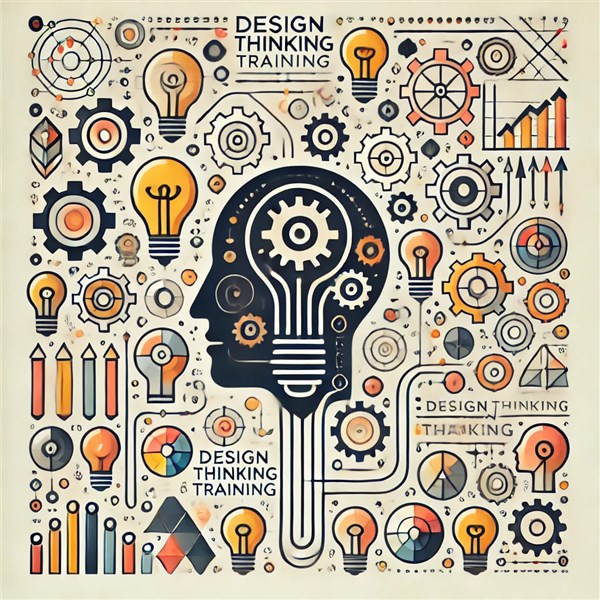We're open through the holidays to support your upskilling goals — book your session today!
We're open through the holidays to support your upskilling goals — book your session today!
Unable to find what you're searching for?
We're here to help you find it
In a world driven by innovation and complexity, traditional problem-solving models often fall short. That’s where Design Thinking shines—a human-centered, iterative approach to solving problems and creating value. While it originated in the field of design, its applications span business strategy, education, healthcare, technology, product management, and beyond.
To truly leverage its potential, professionals are turning to Design Thinking training, a structured yet dynamic learning journey that instills the mindset, tools, and frameworks necessary to drive innovation and build products and services that people truly need.
Whether you're a product manager, UX designer, entrepreneur, consultant, or part of a corporate innovation team, design thinking training helps transform how you think, create, and collaborate. In this article, we break down the top skills you’ll gain from design thinking training and why they matter in today's business and creative ecosystems.
The first phase of design thinking is Empathize, and for good reason. You learn to:
Why it matters: In a world of data overload, human insight becomes a differentiator. Empathy allows you to build products, services, and experiences that are not only usable but meaningful.
Design thinking fosters structured creativity. Through training, you’ll master:
Why it matters: Innovation isn’t about having one good idea—it’s about generating many, testing rapidly, and selecting strategically. Ideation techniques help you unlock creativity on demand.
Design thinking emphasizes the creation of low-fidelity prototypes—rough drafts that make ideas tangible. In training, you’ll learn how to:
Why it matters: Prototyping early and often minimizes risk, reduces time-to-market, and ensures that your final solution is based on real-world interaction—not guesswork.
A design is only as good as its user experience. You’ll learn to:
Why it matters: Continuous testing ensures your product is refined based on real-world data, not assumptions, which improves adoption and satisfaction rates.
Design thinking isn’t about jumping straight into solutions—it’s about defining the right problem. You’ll develop the ability to:
Why it matters: A well-defined problem statement is the foundation of successful innovation. Reframing unlocks new perspectives and better solutions.
Design thinking training promotes teamwork through:
Why it matters: Great ideas rarely happen in isolation. This skill fosters psychological safety and innovation culture across departments like marketing, engineering, and product.
Design thinking encourages agility, not rigidity. You’ll cultivate:
Why it matters: Innovation isn’t a straight line. Flexibility helps you pivot faster, adapt to change, and keep moving forward—even when obstacles arise.
Design thinking also equips you to pitch your solution clearly and emotionally. You'll learn to:
Why it matters: Stakeholder buy-in is often the difference between a shelved idea and a launched innovation. Storytelling translates technical insights into business impact.
Design thinking doesn’t reject logic—it merges it with intuition. You’ll gain:
Why it matters: Today’s top innovators know that data and design go hand-in-hand. You’ll be empowered to make decisions that are not only bold but smart.
Training teaches you that design thinking isn’t limited to UX/UI. You’ll learn how to apply it in:
Why it matters: The methodology is a universal approach to problem-solving, making it a powerful tool in any role or industry.
✅ Conclusion: Design Thinking Training Creates Modern Problem Solvers
Design thinking is not just a buzzword—it’s a proven approach to driving innovation, creating user-centric solutions, and transforming how teams work together. Through training, you’ll gain:
Whether you’re an aspiring product manager, entrepreneur, UX designer, or team leader, design thinking training will sharpen your ability to build what truly matters.
Koenig Solutions, a leading IT training Company, provides top-notch Design Thinking Training that equips you with these skills and more. Through their extensive course offerings, you'll learn how to effectively apply design thinking principles in your organization, leading to improved products, services, and overall customer satisfaction.
Invest in Design Thinking Training today and take a step towards becoming a more effective problem solver and innovator. Your organization and career will thank you for it.
For more information on Design Thinking Training, visit koenig-solutions.com.

Aarav Goel has top education industry knowledge with 4 years of experience. Being a passionate blogger also does blogging on the technology niche.










